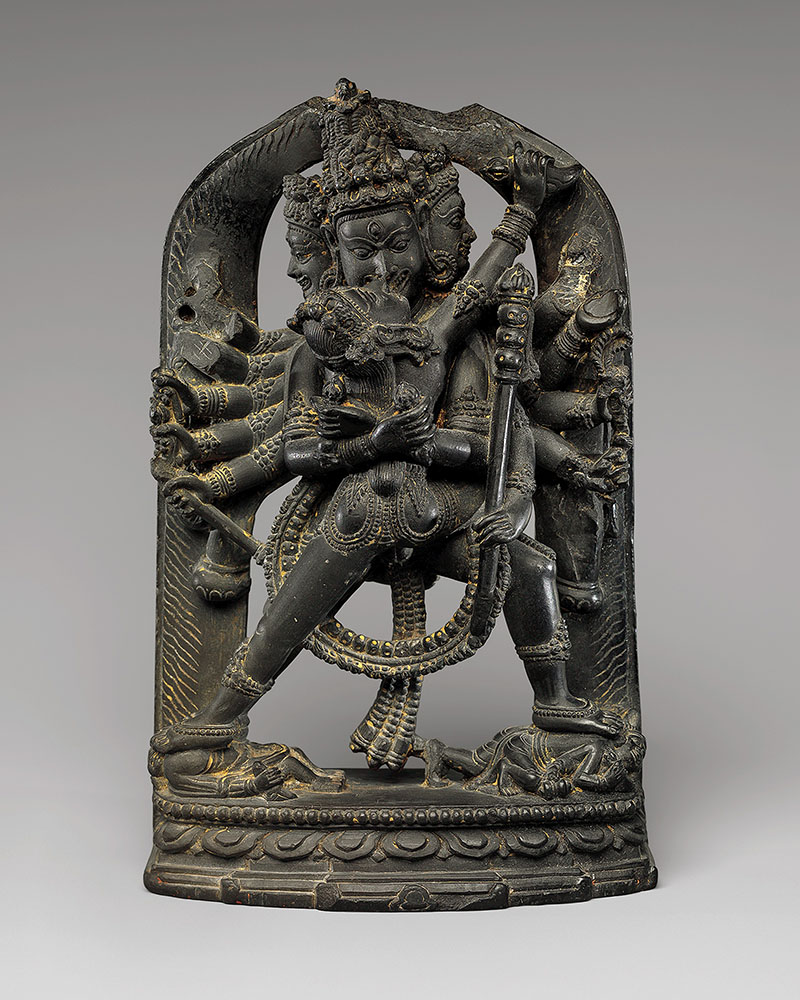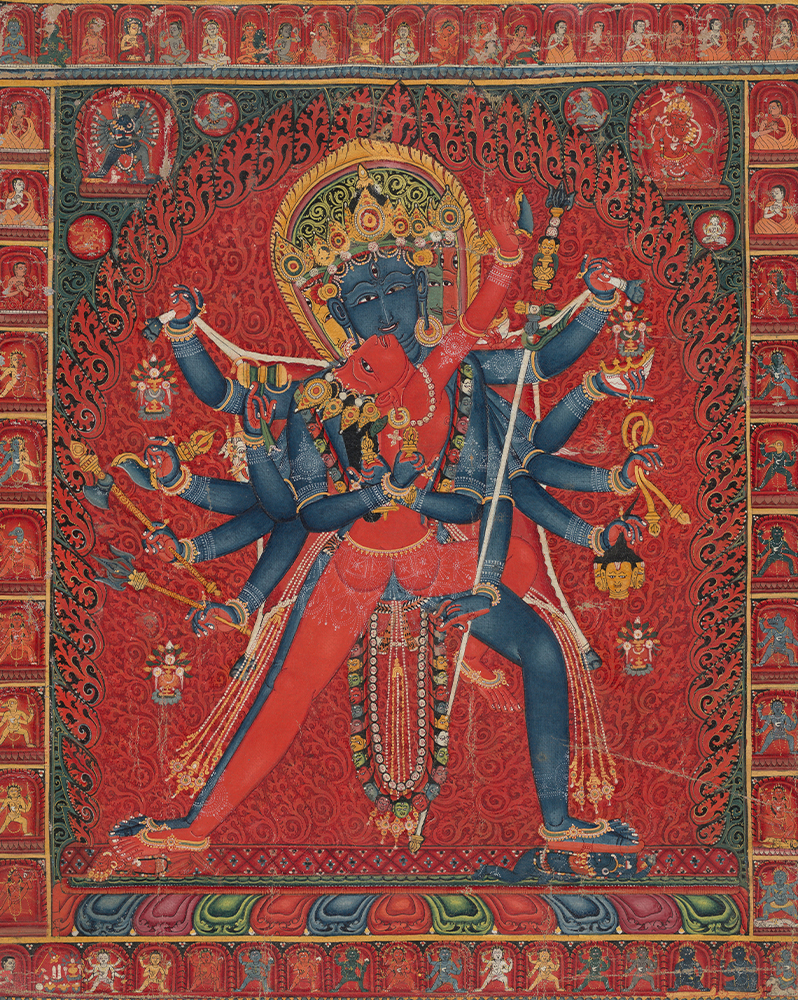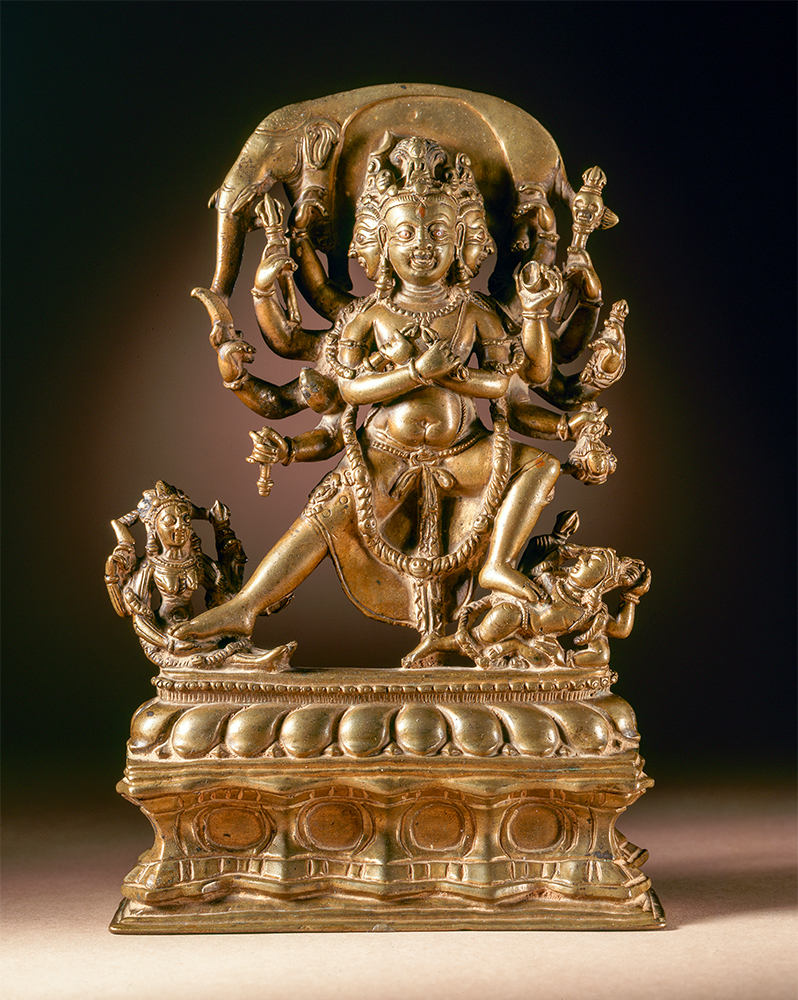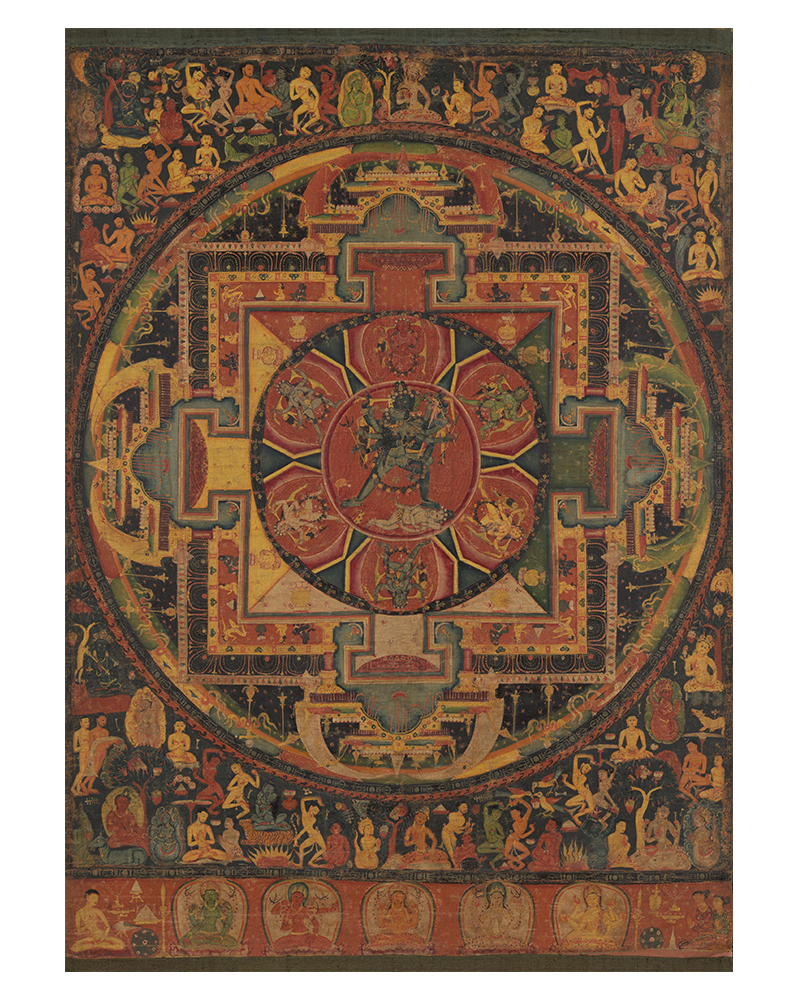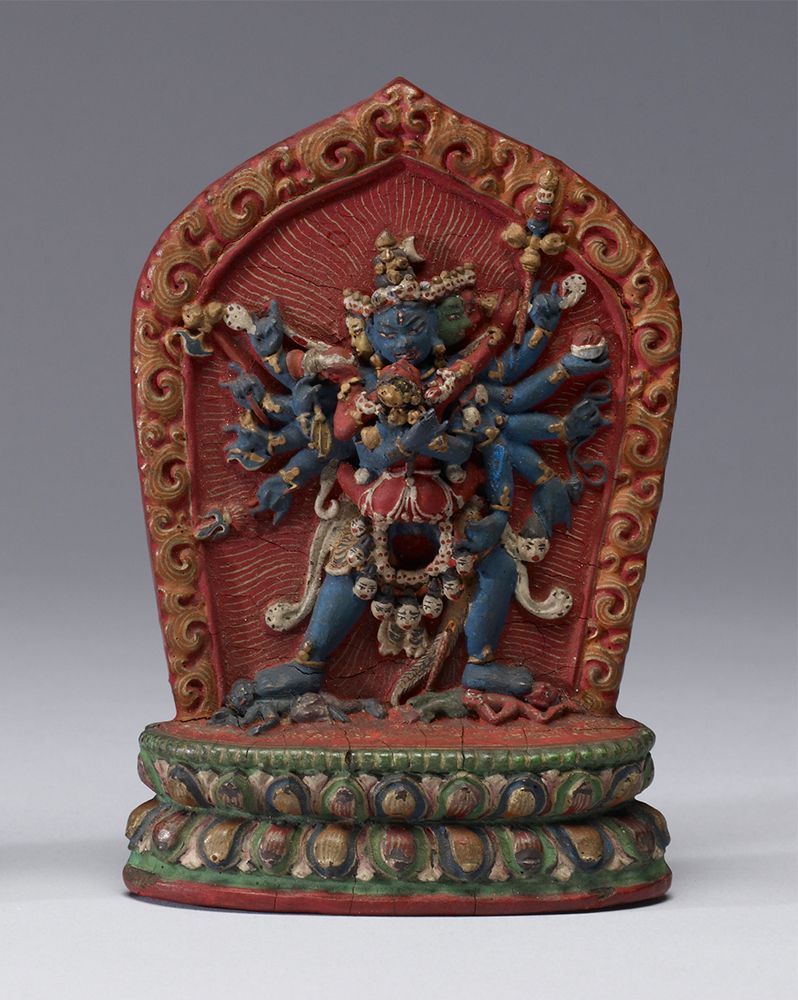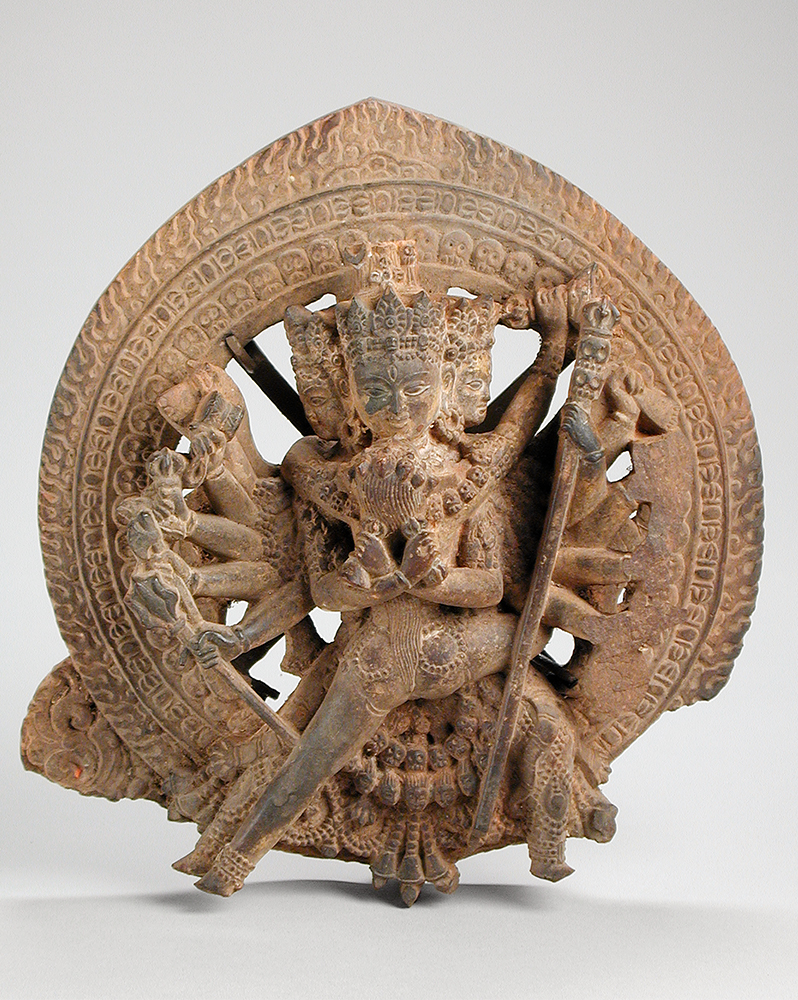ARTICLE
Chakrasamvara
The three traditions of the Chakrasamvara have certain variations in the depictions of the iconography, however several details remain similar. In the Luipa and Krishnacharin traditions there are sixty two deities in mandalas while in the Ghantapa school there are only five figures. Sometimes, the dark blue figure is represented with just two arms. Another rendition of the deity is the white Chakrasamvara who is primarily a meditational deity also associated with prolongation of one’s lifespan.
In sculpture, especially from Tibet, Nepal and Mongolia, the deity is usually depicted in bronze with Vajravarahi, and they both trample the deities Bhairava and Kalaratri, wrathful manifestations of the Shiva and Parvati.
Chakrasamvara is a popular deity in the Himalayan region and Tibetan plateau since the second diffusion of Buddhism in the eleventh century and remains a tutelary figure in many schools of Vajrayana Buddhism and appears in the murals of several monasteries in the region.
Bibliography
Dina Bangdel, “Art in the Ritual Context: The Chakrasamvara Tradition in Newar Buddhism.” Orientations. Vol 34, No 8, 2003.
“Buddhist Deity: Chakrasamvara.” Himalayan Art Resources. Accessed 18 January 2023. https://www.himalayanart.org/search/set.cfm?setID=161
“The Buddhist Deity Chakrasamvara.” Google Arts and Culture. Accessed 18 January 2023. https://artsandculture.google.com/asset/the-buddhist-deity-chakrasamvara/4gHbUnr9W9uXwQ?hl=en
“Chakrasamvara in Union with Vajravarahi.” Rubin Museum. Accessed 18 January 2023. https://rubinmuseum.org/collection/artwork/chakrasamvara-in-union-with-vajravarahi
“Chakrasamvara and Vajravarahi in Sexual Embrace.” Philadelphia Museum of Art. Accessed 18 January 2023. https://philamuseum.org/collection/object/88549




